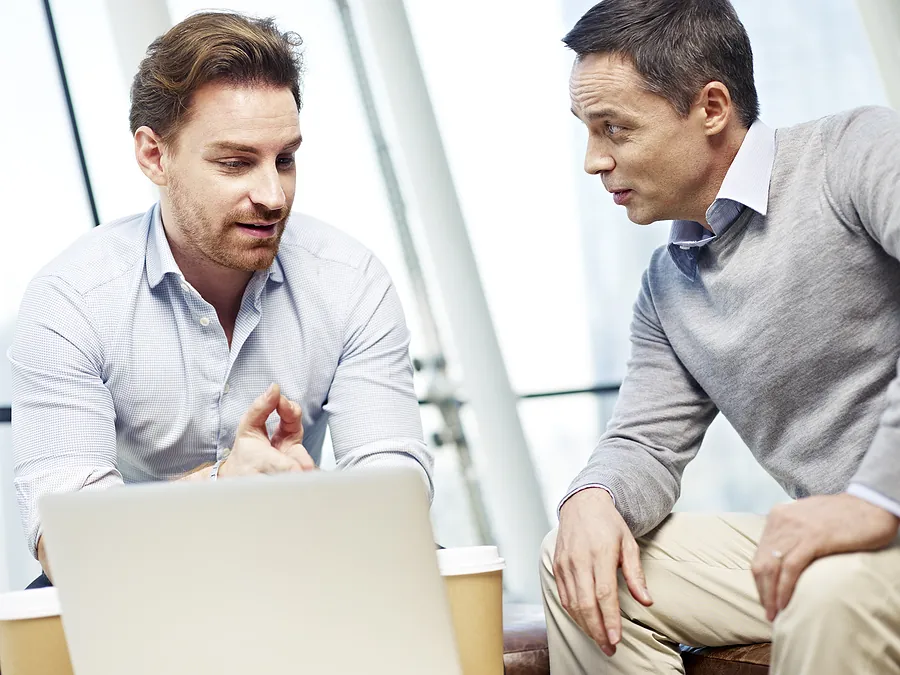How to Build Effective, Long-Lasting B2B Customer Loyalty

Customer loyalty is one of the most important things for a sales organization to cultivate. It’s what drives repeat business and a high Customer Lifetime Value. There’s a wealth of advice out there on how to create customer loyalty for B2C sectors, but less commonly written about is how to develop loyalty for B2B customers. You might ask why that’s the case.
For one thing, B2C sales organizations frequently rely on volume of sales: the profit margin on each individual item is small and success comes by way of generating enough sales to stack up these small margins into a collectively large profit. Hence, it makes sense, for example, for a coffee shop to have a punch card where the 10th coffee purchase is free. A small margin is eliminated, but the buyer has been incentivized to make nine previous purchases to qualify for that free coffee.
Further, B2C organizations generally have much shorter, higher velocity sales cycles. To continue our coffee shop example, a regular buyer might very well purchase a coffee every single day.
Contrast that to B2B. The profit margins on an individual sale are much larger and the sales cycle is much longer and slower. So, if, for example, you were a manufacturer of industrial brewing machines used by coffee shops, it would not make sense for you to offer a buy 9 machines, get the 10th free. You’d be trading away a much larger profit margin that wouldn’t be made up as quickly – not only due to the bigger profit, but because of your longer cycle – the coffee shop isn’t going to buy a new machine every day, for example.
Small wonder there’s a smorgasbord of advice about building B2C customer loyalty – when volume and short velocity are primary features, building loyalty can be tied to the tangible product and devising loyalty programs is much easier to do.
B2B, in contrast, doesn’t offer that easy connection. It’s still possible to build customer loyalty, of course – even essential if you want to improve your customer lifetime value. But it requires thinking about establishing and creating loyalty in a different way – including some things that might not seem obvious at first thought.
1. Don’t be just about the sale.
While closing deals is the primary job duty of a sales rep, it’s not the best way to develop customer loyalty and a long-term relationship. Think of it this way: Imagine you know someone who only talks to you when they want or need something. That’s not someone you particularly enjoy talking to. When you see their name pop up in a communication medium, such as a text or email, your first thought is, “What do they want now?” and you’ll likely be annoyed.
Don’t be that person. Instead, reach out to see how they’re doing, or to share relevant information or even a funny meme/story, so long as it’s appropriate. It’s a way of signaling care and attention, even when you’re too busy to have an extended conversation.
2. Make sure your departments are aligned for ease and speed of communication.
It’s essential for the departments in your organization to be aligned and in sync. The alignment many people think of is marketing and sales – which, while important – isn’t the most critical for developing customer loyalty. Sales and customer service is. That allows you to – when a question or problem comes up with the account – to find and implement a solution to the issue as quickly as possible.
When your departments are siloed, processing the problem and its solution can move much more slowly, which at the very least misses an opportunity to build customer loyalty, and could potentially go so far as to reduce customer loyalty if there’s finger-pointing as to why the issue isn’t addressed and resolved quickly.
3. Establish a customer onboarding program.
While most people think of onboarding in terms of employees, creating effective customer onboarding is important as well – especially for building customer loyalty. Doing so will not only foster a greater connection and sense of loyalty, but it can also help mitigate the number of initial service requests.
If you don’t have one already, or if you do and it’s been a while since you’ve updated your customer onboarding program, a good way to get started is to ask your current clients, “What do you wish you’d known about our product or service when you started?” The answers will highlight gaps that currently exist that a new program or an updated one can then address and resolve.
4. Be willing to go above and beyond in helping clients with issues that come up.
The default tendency when an issue comes up post-sale is to simply pass it off on to the service or support department (which is why Point #2 is so important). But if you have the ability to help resolve an issue before doing so, and consequently perform above the norm in customer service, that can provide a significant boost to that customer’s loyalty.
As an example, a first-year yearbook advisor was facing a same-day deadline. He was having problems trying to do something he wanted to do in the yearbook design software. He reached out to their yearbook manufacturer sales rep and explained the difficulties and time crunch. Because the sales rep knew the program quite well, she went into the program and in five minutes did what would have taken my friend at least a couple hours to figure out, then made other suggestions for a faster, yet still high-quality result.
Total time spent: Around 10 minutes.
Time the sales rep saved: Literally hours.
Result: The school renewed their contract with the manufacturer for the next year despite a full-court sales press from the manufacturer’s top competitor.
This is just one example of how going the extra mile can build buyer loyalty and (literally in this case) extend the customer lifetime value.
5. Ask your current clients what they’d like to see or have.
One of the best ways to build customer loyalty is to simply ask them what they would like to make them even happier and more satisfied in working with you. This could include anything from improvements and innovations to your offering to how the post-implementation support process operates. Then, once you collect the data and sort out your findings, you’ll be able to identify opportunities for how you can further build buyer loyalty.
This has an additional side effect of raising loyalty all by itself: you took the time to ask your clients for their thoughts and opinions and gave them a stake in how to improve your organization.
6. Consider creating and implementing a self-service platform.
Few things are more irritating than having to wade through a sea of phone tree menus to get to the department you want – especially if it’s to get an answer to a simple question. Even emailing involves a wait time that can be off-putting if it’s not immediate.
Therefore one thing to consider if you haven’t put it in place already is a self-service platform where your clients can go and look up answers to easily resolvable questions/issues themselves. To do so, you’ll need to know what the most common issues are and how to fix them. Once you have that information, you’ll be able to set up the first version of the platform.
A key point: Make sure that the platform is streamlined so that it’s user-friendly to navigate and requires as few steps as possible to access the information. After all, if it’s a convoluted, multi-step process to get to the answer, all you’ve done is replicate the phone tree experience in another form. Strive to make it as seamless as possible – perhaps with an initial internal keyword search engine or a drop-down menu if the simple issues are few in number.
As you can see, being B2B doesn’t mean you can’t put systems in place to foster buyer loyalty. There’s multiple avenues and pathways to help create that sense of connection and loyalty. It involves thinking outside the product or service and beyond price discounts to conceiving your relationship with your clients as a holistic experience – one that involves not just the sales organization but the company as a whole.
- 1. Don’t be just about the sale.
- 2. Make sure your departments are aligned for ease and speed of communication.
- 3. Establish a customer onboarding program.
- 4. Be willing to go above and beyond in helping clients with issues that come up.
- 5. Ask your current clients what they’d like to see or have.
- 6. Consider creating and implementing a self-service platform.

- Account Planning (11)
- Awards (50)
- Client Testimonial (37)
- Personal Branding (19)
- Podcast (11)
- Research (68)
- Sales Career Development (85)
- Sales Coaching (153)
- Sales Consulting (133)
- Sales Culture (164)
- Sales Enablement (340)
- Sales Leadership (108)
- Sales Management (242)
- Sales Negotiation (16)
- Sales Prospecting (124)
- Sales Role-Playing (18)
- Sales Training (229)
- Selling Strategies (255)
- Soft Skills (67)
- Talent Management (92)
- Trusted Advisor (27)
- Virtual Selling (41)
- Webinar (10)





























